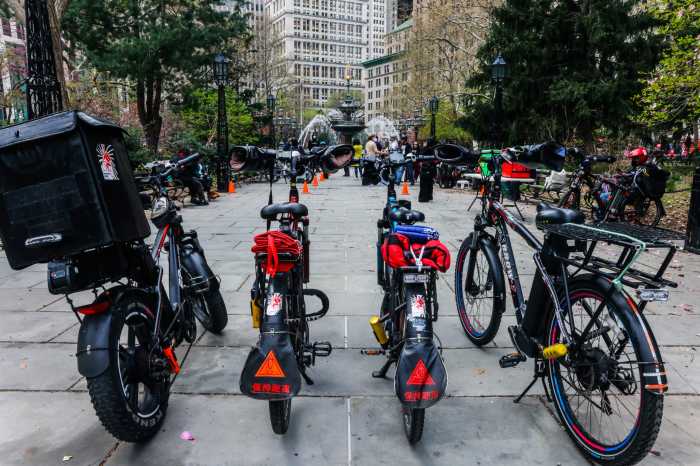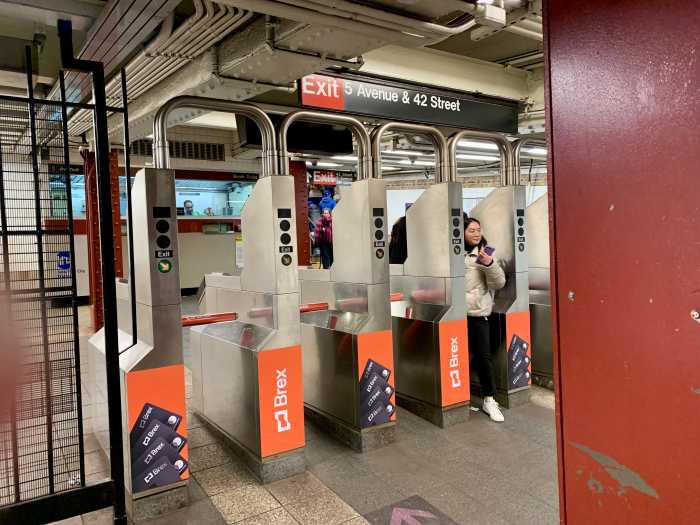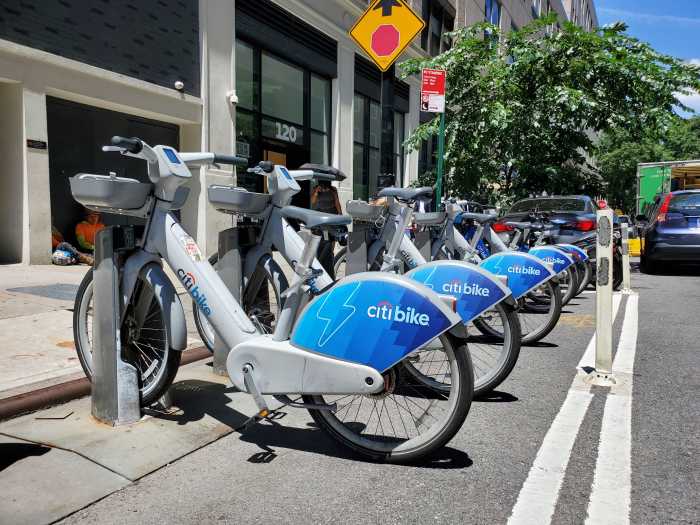
MTA transit workers were booted from the Bedford Avenue subway station Wednesday morning as they warned commuters of potential dangers in Gov. Andrew M. Cuomo’s L train rehabilitation plan.
The workers were distributing flyers to riders within the station’s turnstile area, questioning whether Cuomo’s last-minute reversal on the reconstruction of the line’s Canarsie tunnel is safe; if the new repairs would be dependable and whether subway service would be adequate to avoid dangerous overcrowding in stations and trains.
The event was organized by a group of workers known as Transit Workers for Social Justice, which is calling for the MTA to delay the start of the reconstruction, which is to begin in earnest in two weeks, until the reconstruction approach is properly reviewed by an independent contractor.
“I want riders to be aware … of the potential dangers and also be aware of the fact that [the] process is highly irregular and reckless, I would say, to not have this plan properly vetted,” said Seth Rosenberg, a subway train operator. “It’s all being pushed by Gov. Cuomo, who clearly has a political agenda, and without vetting the plan ahead of time, we can’t be sure it’s safe.”
With a surprise announcement this January, Cuomo called off the planned 15-month shutdown of L service to and through Manhattan — a reconstruction years in the making. Instead of replacing the crumbling, Sandy-damaged bench walls within the tunnel, which encase critical subway cables, the MTA will instead fortify the walls and hang cables on shelving.
While this avoids a full shutdown, riders will see reduced service overnight beginning at 8 p.m. and on weekends, when the reconstruction takes place. The line will serve three trains per hour in each direction during the overnight and weekend work — at times, that could mean as much as an 80 percent drop in service.
The handful of transit workers handing out pamphlets Wednesday were worried that the MTA wouldn’t be able to clear out silica dust from the tunnel in time for regular service, potentially impacting air quality for crews and commuters.
MTA board members had also called for an independent review of the new rehabilitation plans, only to be rebuffed last month.

Suspicions, concerns
Some riders passing through Wednesday shared the workers’ concerns as crews have begun ramping up to full construction, slated to start on the weekend of April 26.
Michelle Carluccio, a Williamsburg resident of 24 years, cheered the workers. She said the new reconstruction plan seemed like “jury-rigged” approach.
“When there is construction going on weekends, I would come down here on Monday, and there is a terrible smoky atmosphere with workers wearing masks,” said Carluccio, a public school teacher. “We the public are entitled to our health when we commute on a system that we pay for. The whole thing is really shady, and I’m concerned. And I’m really happy to see these guys doing something.”
Klaus Rosburg, an industrial designer and Williamsburg resident, said he was “suspicious” of the L shutdown reversal, considering the MTA’s initial messaging that it was the only way to fix the tunnel. He was happy for businesses and community spaces that were worried about a loss of foot traffic under a full shutdown, but wondered if dust levels would intensify in the coming weeks.
“You can feel the dust as we speak,” he said.
MTA officials have insisted the air quality is safe for riders and workers and believe about 95 percent of L train riders will still be able to take the line during the new rehabilitation strategy.
“It’s ludicrous to think that we would do anything to put our employees or our customers at risk,” said MTA managing director Ronnie Hakim in response to the event while at an unrelated news conference Wednesday afternoon. “That was irresponsible and frankly kind of dangerous pandering.”
Janno Lieber, the MTA’s chief development officer, acknowledged during a March MTA board meeting that some employees have elected to wear masks because of “the way it feels in your respiratory system” when they’re stationed along the line for extended periods of time, but he has reiterated that the air is safe and promised "transparent" air quality measurements.
Cuomo’s office did not immediately respond to a request for comment. The workers’ union, Transport Workers Union Local 100, a reliable Cuomo ally, did not officially sanction the event. Local 100 president Tony Utano said in a statement that the union "do[es] not believe it’s unsafe to use the L line or work in the stations.”
“Safety is very important to us and we’d never let workers be in an unsafe environment," Utano said.
Police ejected the small group of MTA employees from the station within an hour, with one of the two officers present stating that the workers were “disrupting the flow of traffic” as commuters and work crews buzzed by in the under-construction Bedford station. An officer warned that the workers would be arrested if they returned to the station within 24 hours.
Rosenberg said he believed the group was protected under the First Amendment, but obliged.
“We’re just disrupting Cuomo’s narrative,” he said.
































